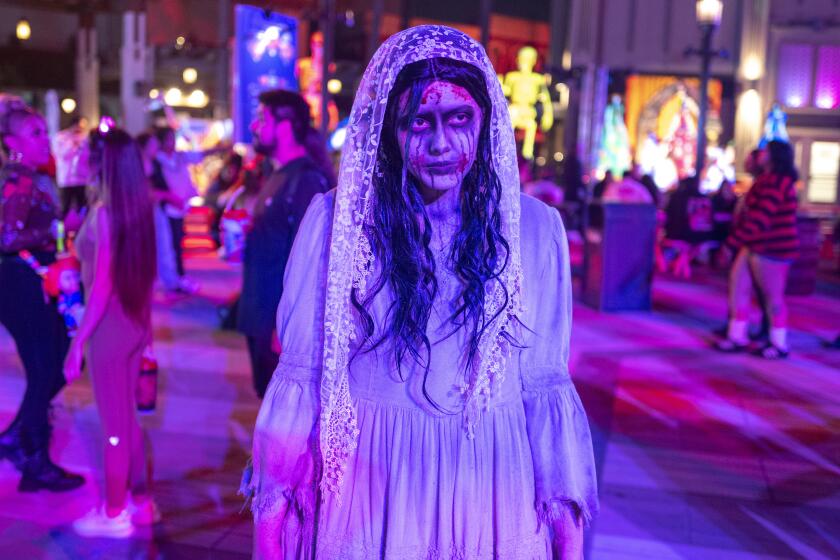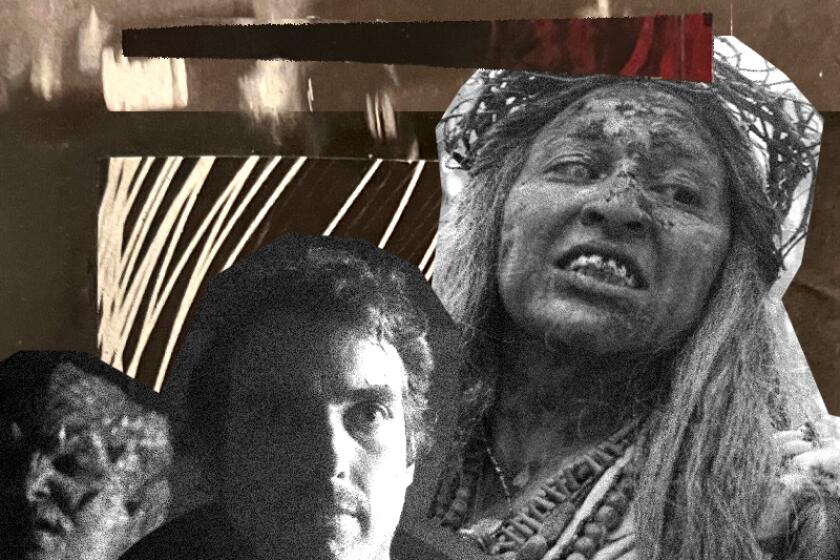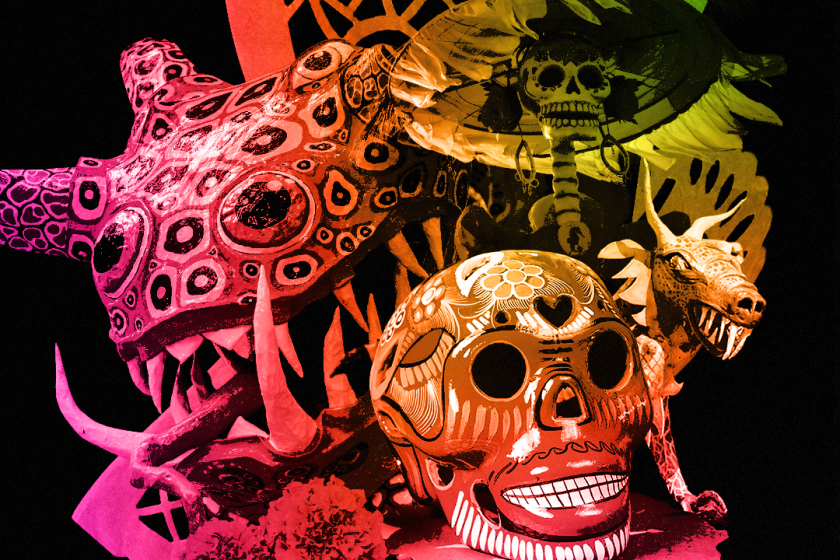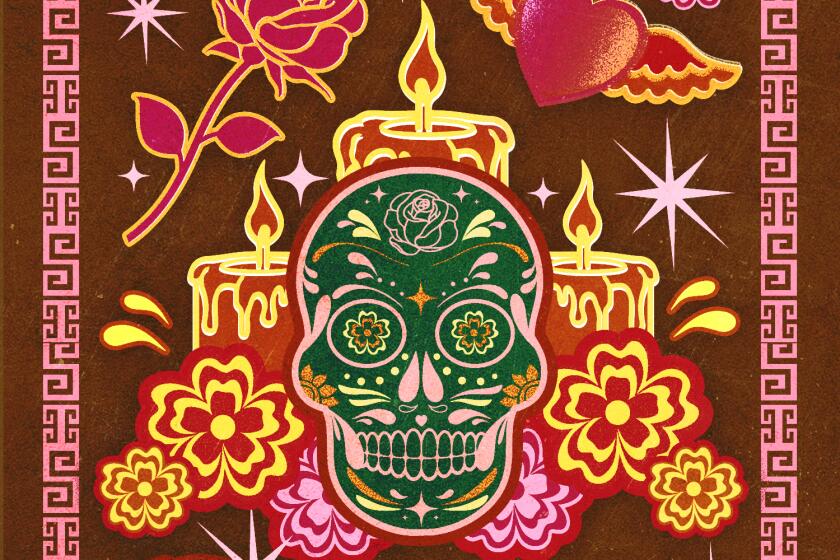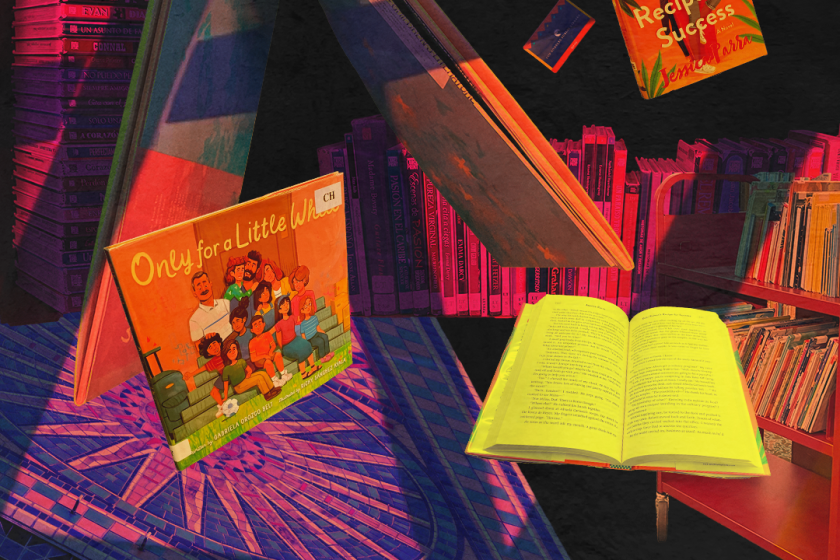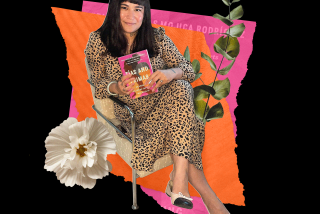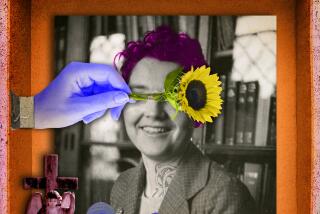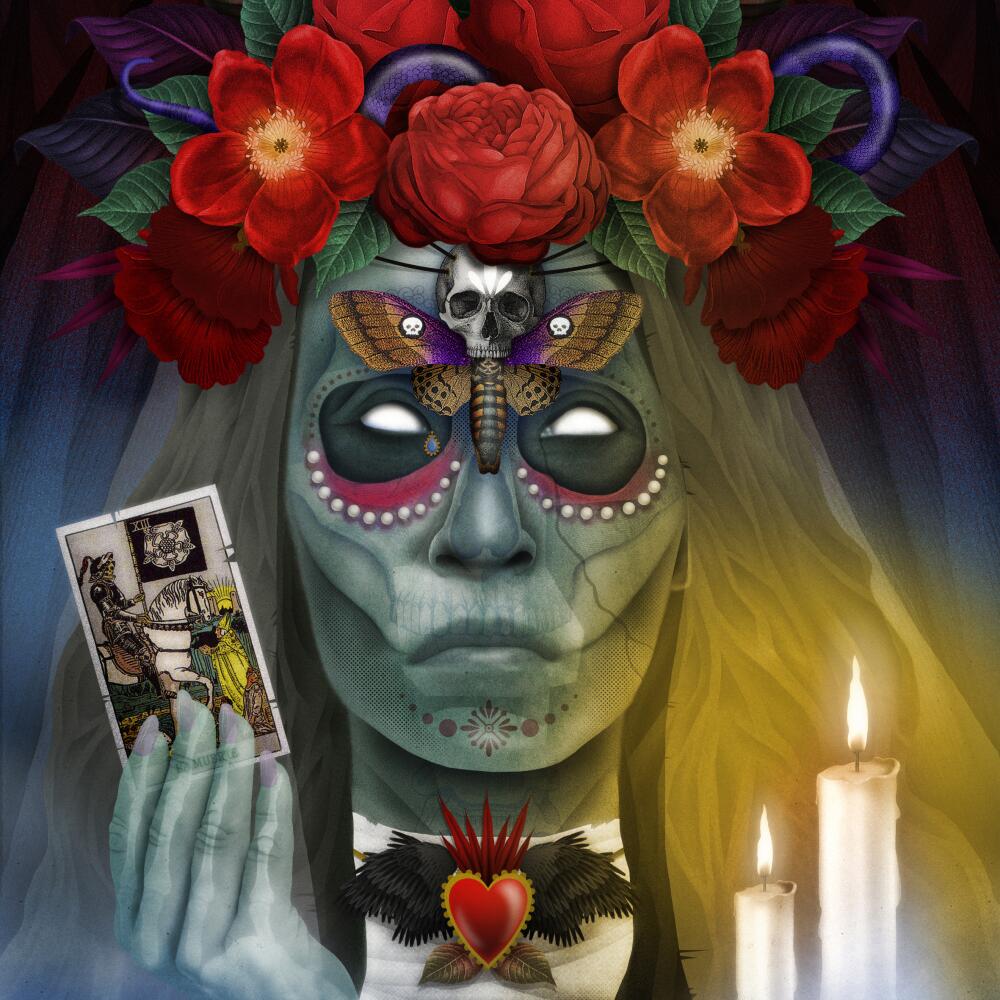
La Llorona seeps into memories and households across countries, emerging from rough terrains, desolate roads and hollow creeks. Geographically diverse, the oral tradition and literary material of the mythical creature live in the rhythm of words and the fabric of Mesoamerican folklore.
During the postcolonial era, La Llorona was portrayed as an Indigenous woman who bears two sons to a wealthy Spaniard. He leaves her for a Spanish woman of a different social status. In a state of fury, she drowns her children and then takes her own life. In limbo, she haunts Mexicoâs streets and nearby waterfronts, forced into atonement.
This rendition perpetuates a common trope rooted in dominance over groups such as women and Indigenous communities.
Whether La Llorona is held up as a form of resistance against oppression, owning her power or reclaiming the monstrous bruja within, the narratives of the wailing woman have endured for centuries, reimagined into a radical icon.
Stories and interpretations
Carolina Munoz recalls hearing the story of a woman weeping by a riverbed. It was a stormy night in Jalisco, Mexico, where she was visiting family.
âThere was a river with a grassy cliff nearby, and it was told to me as something that happened locally,â said Munoz, a second-year English PhD student at the University of Southern California.
At age 7, her imagination soared with an immense sense of fear around the sensations and sounds evoked by this spirit.
Latin American horror haunts visitors at Universal Studiosâ Halloween Horror Nights in a new monstrous haunted house.
âI remember thinking about her crying,â she said.
But this is merely one tale of La Llorona. Throughout the years, she has become a Latin American legend who has crept into the depths of storytelling thatâs been passed down for generations.
The first official documentation of La Llorona is in a 19th century sonnet by poet Manuel Carpio. There is no reference to infanticide, but La Llorona is portrayed as a ghost after being murdered by her husband.
In Guatemala, stories describe a maligned woman who drowned her son to cover up an affair. In Venezuela, the story is tied to colonialism and the grief is for the murdered children.
La Llorona is sometimes deemed an apparition. The mythological creature mourns her kids, who, in some variations, take their own lives. Sometimes, she consumes new souls with a dagger in her eye and sharp nails.
A group of Latino directors put together a horror anthology that leans into the myths and monsters of Latino culture.
These macabre interpretations are rooted in different regions throughout Mexico, Central and South America and are popularized in the Southwest of the United States.
âWe can talk about Mexican national identity through her. We can talk about indigeneity, gender, sexuality, trauma, mourning â all of these things that are difficult and painful,â said Orquidea Morales, a professor at the University of Arizona who focuses on the intersection of Latinx studies and horror in film, theater and television.
For Morales, the details of La Llorona imbue different emotions. Morales learned about La Llorona as a âwoman whose husband crossed the border into the U.S. for work. Her child accidentally drowned when she tried to find him as they crossed the river. She [dies] out of sorrow.
âI grew up on the border, back and forth, so I empathize with her,â said Morales. âOur idea of what terrifies us changes across time and space.â
The DĂa de Muertos parade is a sumptuous, extravagant delight. It might surprise some to hear that the parade stemmed from a single scene in a James Bond movie in 2015.
Other tales illustrate an immortal spirit cloaked in a long white gown, hair flowing to her knees, condemned to roam for eternity as a form of repentance â tied to both religious divinity and sanctity. Her story is told as a cautionary tale for children, instilling discipline and a message about seduction and a wayward husband, or shared as a form of entertainment.
The lure of horror within Latine culture can serve as an exploration of society, a way to tap into experiences and emotions that can be difficult to talk about or as a way of gathering and passing along pieces of history. The fascination with this genre is seen in motifs like El Cucuy, a boogeyman, and the shapeshifter Nagual.
âThe only thing thatâs persevered, thatâs continued in time, has been oral tradition â these stories, legends and myths,â Munoz said. âItâs also necessary to know what ideologies and ideas structure these stories to understand better what it was like to be a person, specifically a woman.â
La Llorona influenced countless songs, literature and visual art forms. The folk ballads dedicated to the lamenting woman channel a communal pain, sung by Chavela Vargas, Joan Baez, Lila Downs, Lola BeltrĂĄn and Lucha Villa.
âThereâs contemporary iterations of the legend that definitely privileged certain historical, sociological and cultural facets and implications of the legend,â Munoz said.
Hereâs your guide for events in L.A. and O.C. counties that are bringing the community together to celebrate DĂa de Muertos.
In 1866, a Spanish Jesuit priest, JosĂ© Maria LeĂłn y DomĂnguez, published a first-person narrative, âEl Pozo de La Llorona.â Some scholars speculate this story reached Mexico and then was integrated with Indigenous mythology that shaped the Llorona popularized today.
The phantom appeared nearly 100 years later onscreen in the 1960s in âLa Llorona,â which travels back to New Spain and to the present time in Guanajuato, Mexico. The film revealed the social structures and racial hierarchies that confined La Llorona under a colonial lens.
Poets also have embraced the figureâs mysticism and inspired verses, as in Norma Elia CantĂșâs âLa Llorona Considers the State of Tortillas.â The writer and Murchison professor at Trinity University reinterprets La Llorona as a tortilla.
âSheâs an ever-present figure,â she said. âThe tortilla is not just for eating. I think that La Llorona is also not just for kids.â
Origins and connections
The myth is said to have arrived in the central highlands of Mexico, but one chronicle tells of an omen forewarning the Spanish conquest in the altepetl of Mexico.
The NĂĄhuatl account is documented in the Florentine Codex, a 16th century study by a Franciscan friar, Bernardino de SahagĂșn. This deity is described as offering premonitions of war, roaming the temples of Tenochtitlan, the Aztec capital, and sharing visions of a catastrophe before the arrival of the Europeans.
For speakers of some of the most commonly spoken native languages like Quechua, Nahuatl or Guarani, the conversation is less about whether you speak Spanish but rather how Indigenous languages are left out of the discussion.
Contextualized within the Aztec pantheon of gods, La Llorona is associated with CihuacĆÄtl, a fertility goddess and snake woman. She also is correlated to midwives or Cihuateteo, the worshiped spirits of women who died in childbirth.
The functions of these deities are multifaceted, personified as the mother of children killed in war and a metaphor for a sacrifice to save the âAzteca-Mexica cultureâ from colonial rule.
But in the work of Chicana feminist writer Gloria AnzaldĂșa, she examines how the feminine entities were reduced to hideous, âchild-eatingâ demons summoned to the underworld, where they assumed the suffering of Mexico.
What scholars like AnzaldĂșa and Morales explore is the complex dichotomous split placed under patriarchy that the Spaniards furthered. These portrayals were a mechanism to indoctrinate religious and political dominance. Tonantzin and the Virgen de Guadalupe â revered and pure â are idolized, whereas Coatlicue (Aztec mother goddess) and La Llorona are objectified. It is a lesson to remain pious, said Morales.
Reclaiming La Llorona
La Llorona is conflated with characteristics found in the vilified La Malinche (Malintzin) or Doña Marina, viewed as a traitor for serving as an interpreter to the conquistador Hernån Cortés and mothering his son, who symbolized the first mestizo.
Literary writer Octavio Pazâs 1950 essay, âThe Labyrinth of Solitude,â defines Mexican national identity by christening La Llorona alongside La Virgen and La Malinche. These âmotherâ figures are central to his analysis of the âdestruction of Aztecs,â as they assume the nationâs collective misery, humility and blame.
âThis migration set the stage for her adoption into Chicano nationalist rhetoric, which placed [La Llorona] as the bad mother, next to the traitor La Malinche,â wrote Morales in her academic dissertation.
Latino authors across Los Angeles are taking advantage of the resources offered by local libraries to jump-start their careers.
The Chicano Movement of the 1960s and â70s reignited Malinche and used the term âmalinchistasâ for Chicana feminists who assert their place, calling for gender equality. The Mexican trinity became a national symbol, fueling heteronormative roles.
These disparities galvanized Chicana feminists into creative writing and artistic expression that dismantled dominant themes reinforcing misogyny. The feminist representation offered a vessel for new meaning, recognizing the oppression against women.
AnzaldĂșaâs book âBorderlands/La Frontera: The New Mestizaâ laid the foundation for much of the Chicana feminist literary canon, pushing discourse forward. Cultural producers began redefining the Llorona archetype, reasserting her agency in this âborderland space.â
A pathway to subvert the negative depictions of La Llorona was built by the likes of writer-activist CherrĂe Moraga, who integrates gender power dynamics in her play âThe Hungry Woman: A Mexican Medea.â
Humanity in monsters
âWe can think about external monsters and ghosts, but what do those ghosts tell us about ourselves?â said Morales.
Folklorists find stories about monsters to be multidimensional, informing people about themselves and eliciting different emotions, including anxiety.
Kentucky folklife specialist Camille Acosta views horror as an instrument for healing. She said that her father could cry out of fear for this spooky ghost woman or joke around with his friends about Chupacabra.
With the help of Latina therapists, first-generation women are laying down boundaries and addressing unhealthy family dynamics, but it can sometimes feel like thankless work.
âThese emotional moments allowed him to feel when a system denied him that vulnerability,â she said. âThatâs why he found such beauty in the escapism of monsters, specifically, La Llorona growing up.â
Stories about monsters often were used as colonization tactics to gain control over groups of people, Acosta said. The act of colonizing can manifest in different ways. The Texas-born folklorist believes monsters became a tool of communication where generational trauma is passed down as tradition.
âFor years, BIPOC have felt monstrous for being themselves, otherized for speaking a different language or having different cultural traditions,â Acosta said. âMy [wish] for the future is to reclaim this narrative of monstrosity right in the face of colonization and say, âIâm proud to be a monstrous being. Iâm terrifying. Iâm strong. Iâm different but beautiful.ââ
Acosta hopes monsters never leave her side, including La Llorona. âI hope sheâs always, at least, a river away,â she said.
Sarah Quiñones Wolfson is a Los Angeles-based journalist with experience crafting stories focusing on the intersection of arts, culture and social justice. She has written for outlets like the Los Angeles Times, Hyperallergic and KCET.
More to Read
The Latinx experience chronicled
Get the Latinx Files newsletter for stories that capture the multitudes within our communities.
You may occasionally receive promotional content from the Los Angeles Times.
